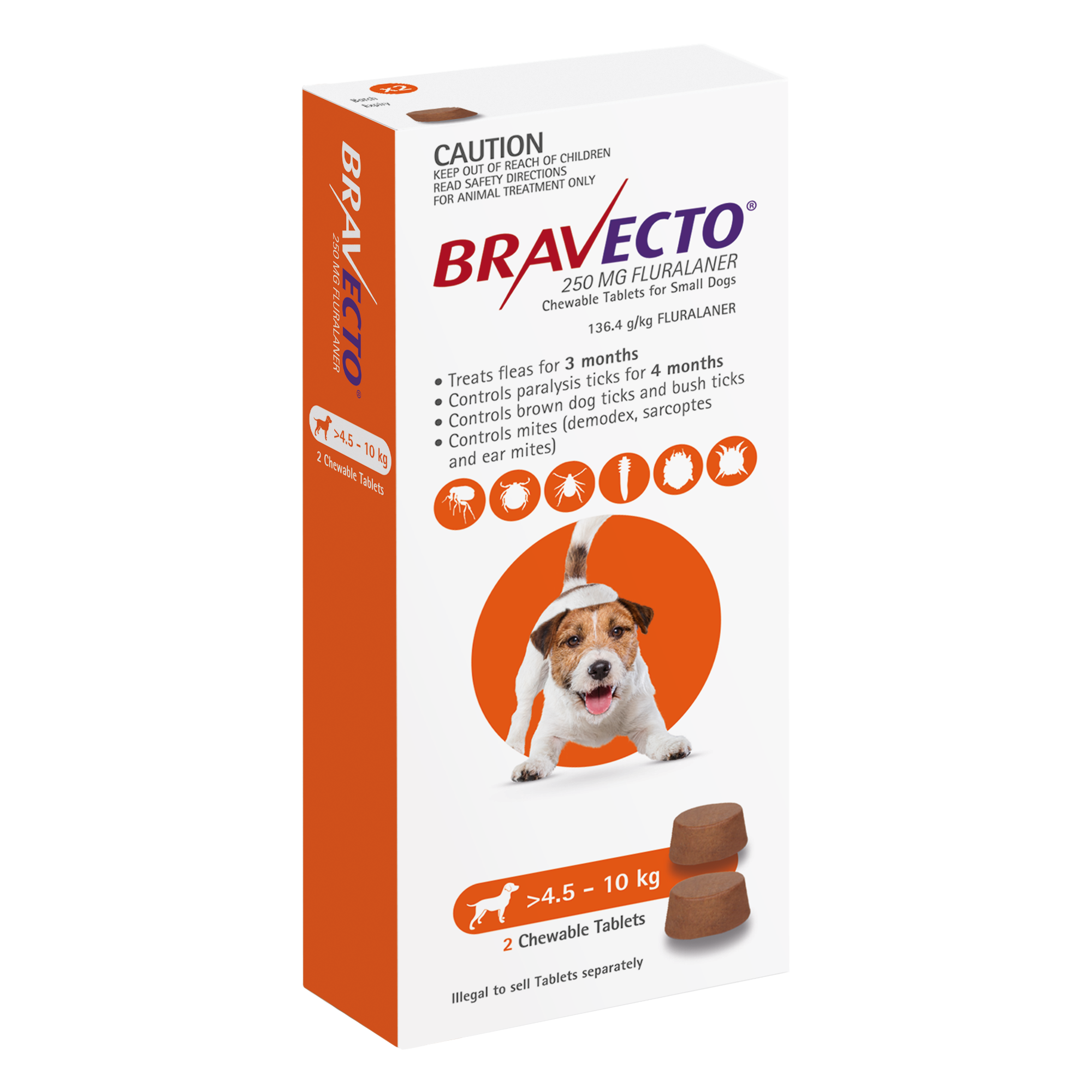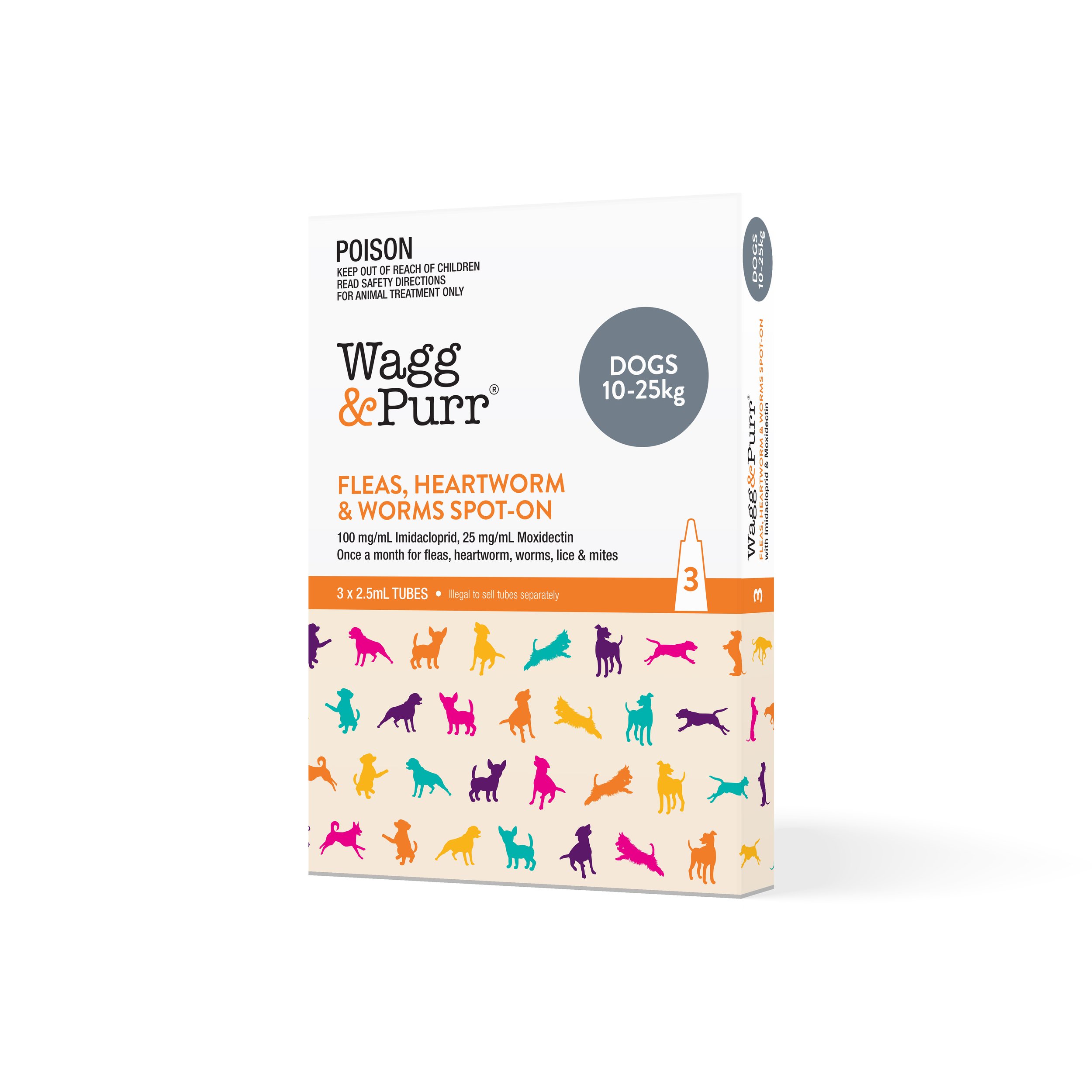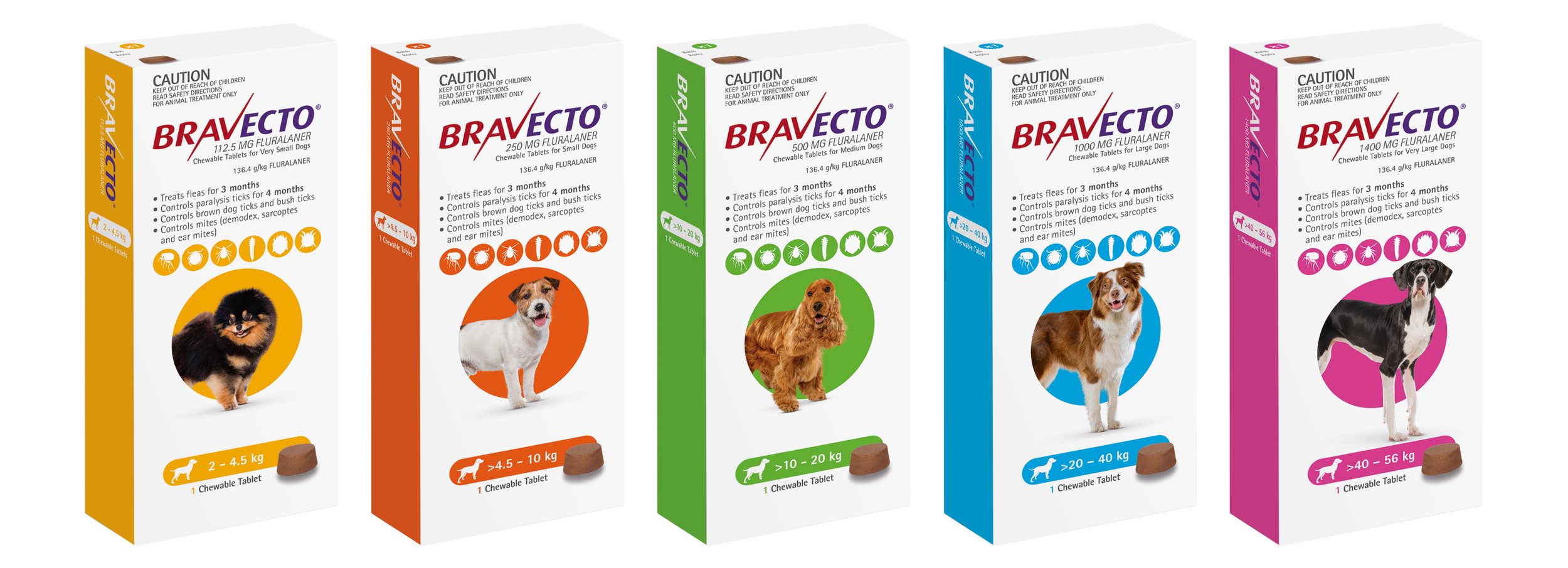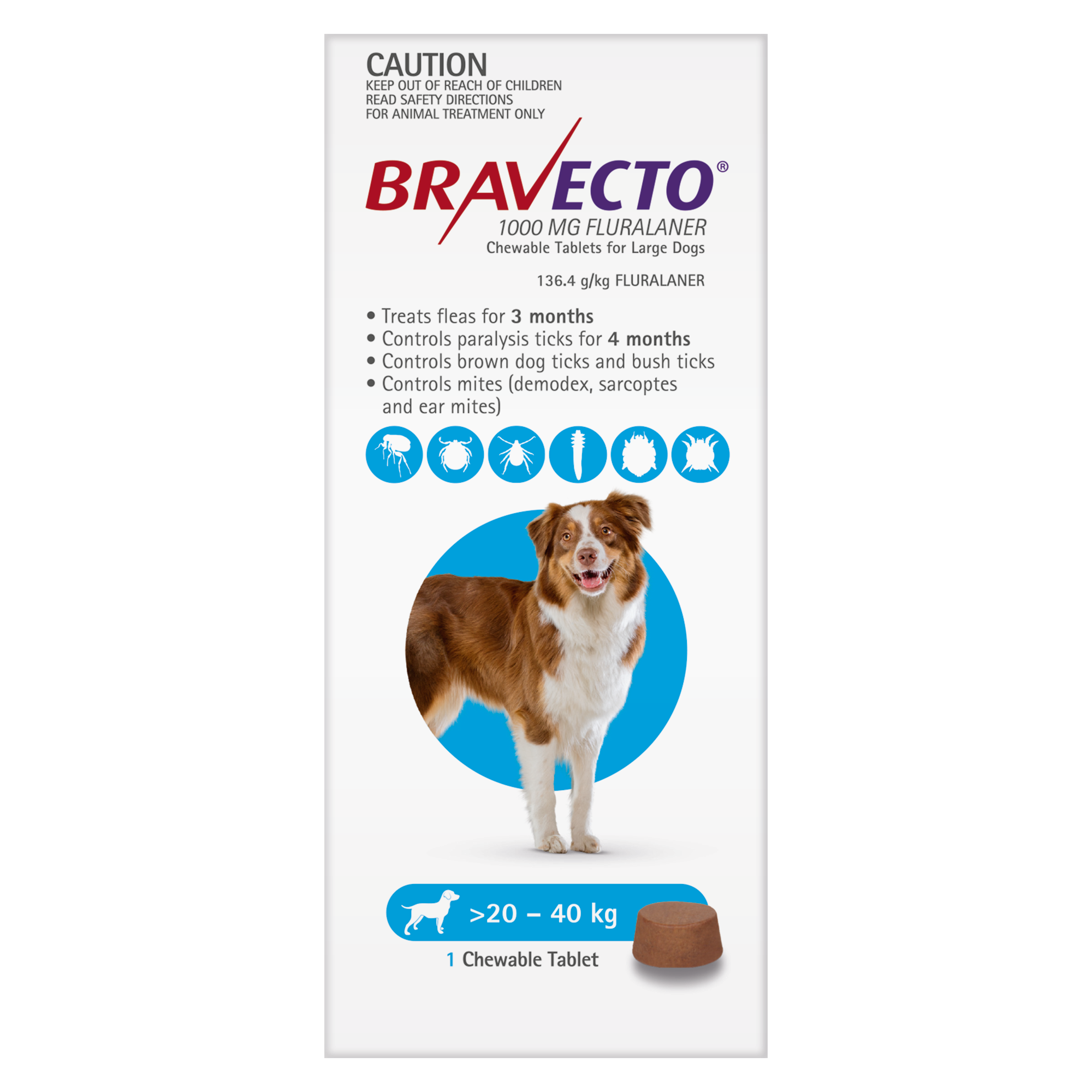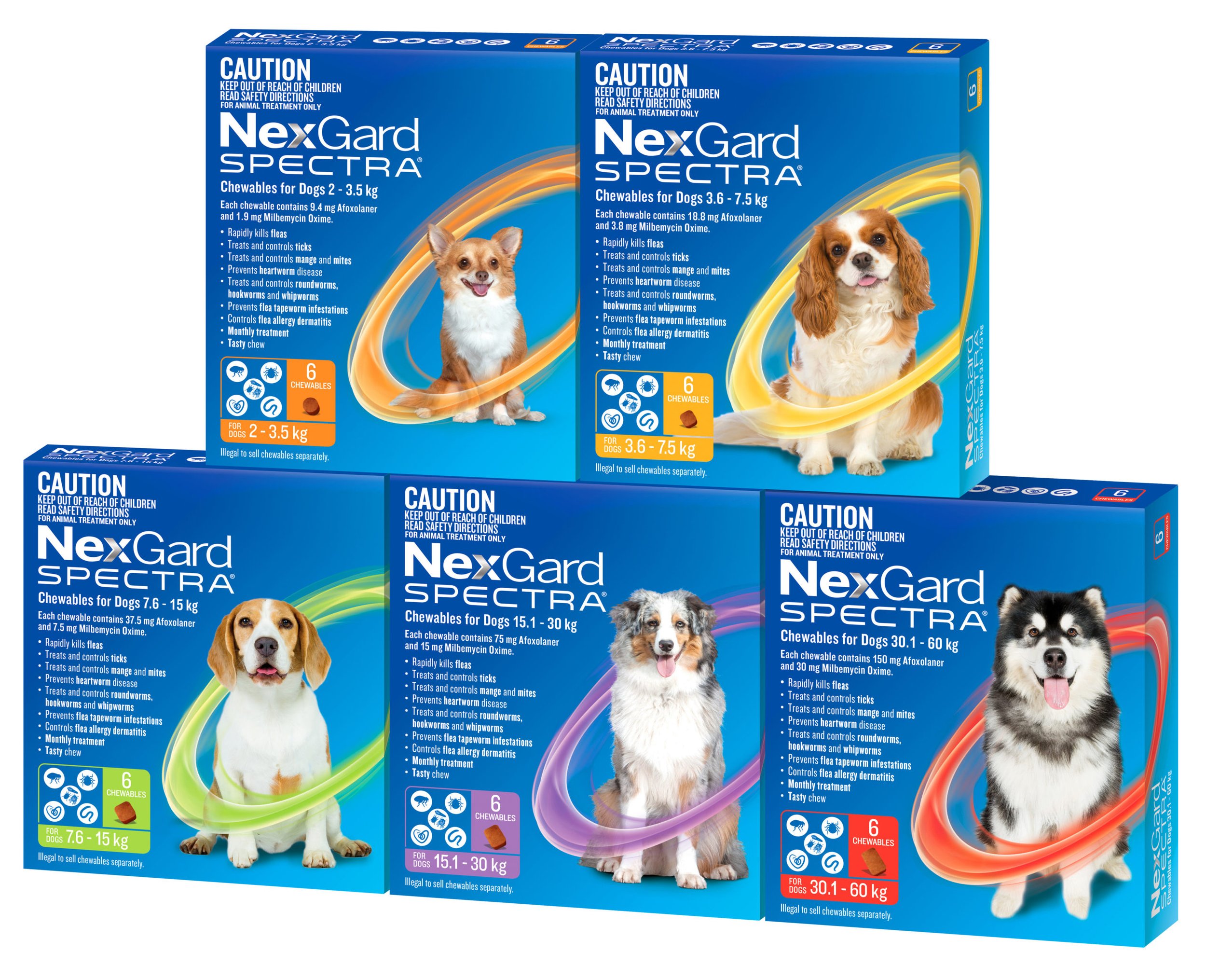 Image 1 of 3
Image 1 of 3

 Image 2 of 3
Image 2 of 3

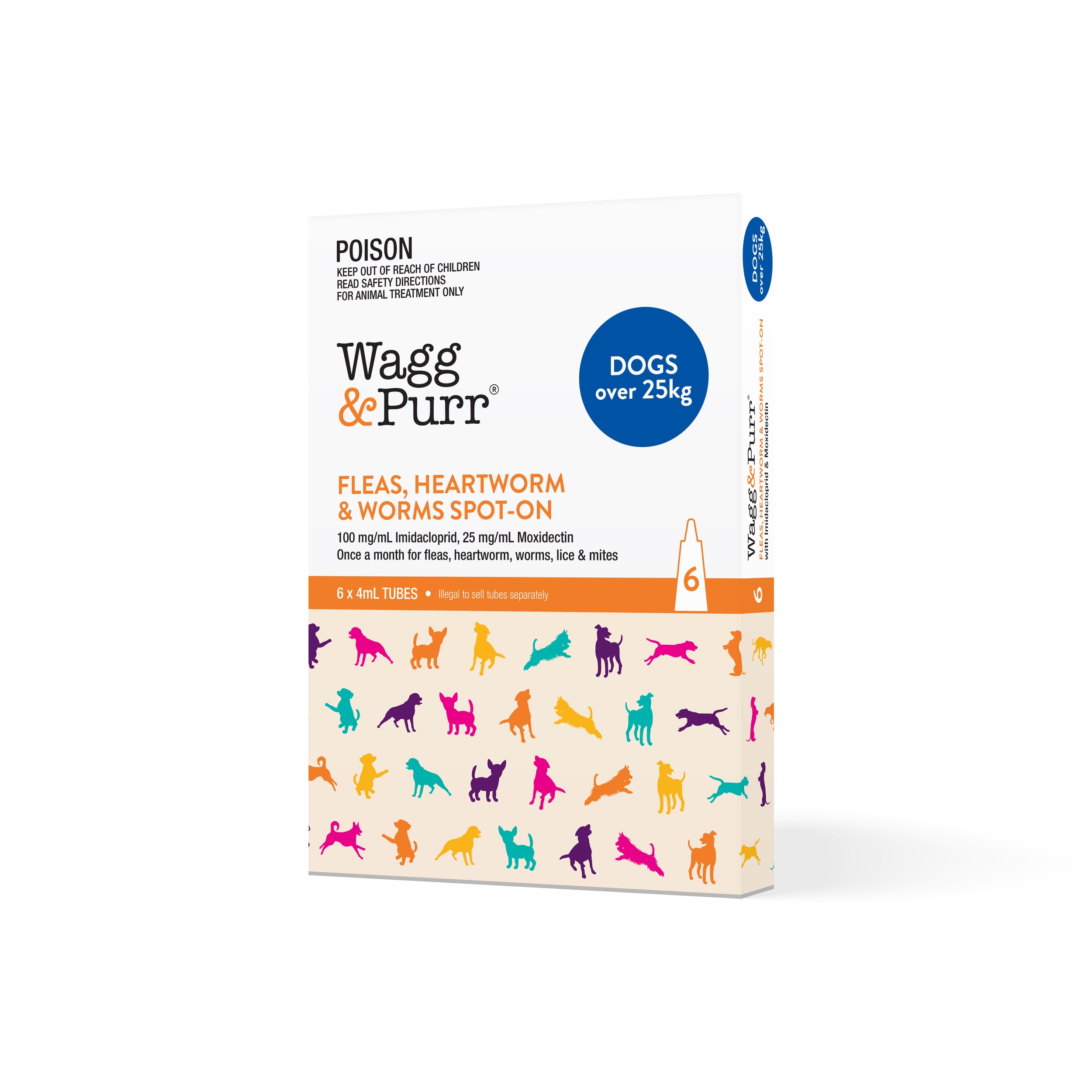 Image 3 of 3
Image 3 of 3




Wagg & Purr Fleas, Heartworm and Worms Orange Imidacloprid Moxidectin Spot On Dog 6 Pack
PLEASE NOTE: This product is now available to deliver via Couriersplease (2-7 business day delivery with shipping cost calculated at checkout) or Uber Direct for people living within a 30km radius of Melbourne CBD. If you select Uber Direct as the delivery method then the shipping fee will appear as $0 at checkout. Once we receive your order a staff member will contact you to organise a delivery time and take payment for the delivery fee. Delivery pick up times will always be within our business hours, 8am - 6pm weekdays and 9am-12pm Saturdays. Uber Direct will only deliver products weighing 20kg or less.
A once a month spot on for fleas, heartworm, worms, lice & mites.
Stops flea feeding in 3-5 minutes
Prevents heartworm and controls intestinal worms and larvae
Convenient, easy to apply
Water resistant formulation
This product does not contain tick prevention
In Australia, tick treatment for pets is particularly important in regions where tick populations are prevalent, especially areas where the deadly paralysis tick (Ixodes holocyclus) is common. The primary regions that require tick treatment in pets include:
Eastern Coastal Regions
Queensland: The coastal areas of Queensland, particularly from Far North Queensland down to the Gold Coast, are high-risk zones for paralysis ticks.
New South Wales: The north coast (around Byron Bay) to Sydney and even further down to the South Coast are well-known tick hotspots.
Victoria: The Gippsland region and other coastal areas in eastern Victoria can also have tick populations.
Fraser Island
Fraser Island (K’gari) in Queensland is notorious for ticks, particularly paralysis ticks, making it a very high-risk area for pets.
Bushland and Suburban Areas
Areas with dense bushland, forests, or long grass, even in suburban locations near these habitats, can have ticks. This is common in many parts of the eastern states, especially near national parks and reserves.
Northern Territory
While the Northern Territory is not as commonly associated with paralysis ticks, certain parts, especially in the northern regions, can have other types of ticks, including those that cause skin irritation or infections in pets.
Precautionary Measures
Regular Tick Checks: If you live in or are visiting these areas, it's essential to perform regular tick checks on your pets, especially after walks or outdoor activities.
Tick Preventatives: Using tick preventatives such as collars, spot-on treatments, or oral medications is recommended in these regions.
Given the risk of paralysis ticks in these areas, it is crucial to maintain regular tick prevention and check your pets frequently, especially during the tick season, which typically runs from spring to autumn.
PLEASE NOTE: This product is now available to deliver via Couriersplease (2-7 business day delivery with shipping cost calculated at checkout) or Uber Direct for people living within a 30km radius of Melbourne CBD. If you select Uber Direct as the delivery method then the shipping fee will appear as $0 at checkout. Once we receive your order a staff member will contact you to organise a delivery time and take payment for the delivery fee. Delivery pick up times will always be within our business hours, 8am - 6pm weekdays and 9am-12pm Saturdays. Uber Direct will only deliver products weighing 20kg or less.
A once a month spot on for fleas, heartworm, worms, lice & mites.
Stops flea feeding in 3-5 minutes
Prevents heartworm and controls intestinal worms and larvae
Convenient, easy to apply
Water resistant formulation
This product does not contain tick prevention
In Australia, tick treatment for pets is particularly important in regions where tick populations are prevalent, especially areas where the deadly paralysis tick (Ixodes holocyclus) is common. The primary regions that require tick treatment in pets include:
Eastern Coastal Regions
Queensland: The coastal areas of Queensland, particularly from Far North Queensland down to the Gold Coast, are high-risk zones for paralysis ticks.
New South Wales: The north coast (around Byron Bay) to Sydney and even further down to the South Coast are well-known tick hotspots.
Victoria: The Gippsland region and other coastal areas in eastern Victoria can also have tick populations.
Fraser Island
Fraser Island (K’gari) in Queensland is notorious for ticks, particularly paralysis ticks, making it a very high-risk area for pets.
Bushland and Suburban Areas
Areas with dense bushland, forests, or long grass, even in suburban locations near these habitats, can have ticks. This is common in many parts of the eastern states, especially near national parks and reserves.
Northern Territory
While the Northern Territory is not as commonly associated with paralysis ticks, certain parts, especially in the northern regions, can have other types of ticks, including those that cause skin irritation or infections in pets.
Precautionary Measures
Regular Tick Checks: If you live in or are visiting these areas, it's essential to perform regular tick checks on your pets, especially after walks or outdoor activities.
Tick Preventatives: Using tick preventatives such as collars, spot-on treatments, or oral medications is recommended in these regions.
Given the risk of paralysis ticks in these areas, it is crucial to maintain regular tick prevention and check your pets frequently, especially during the tick season, which typically runs from spring to autumn.
PLEASE NOTE: This product is now available to deliver via Couriersplease (2-7 business day delivery with shipping cost calculated at checkout) or Uber Direct for people living within a 30km radius of Melbourne CBD. If you select Uber Direct as the delivery method then the shipping fee will appear as $0 at checkout. Once we receive your order a staff member will contact you to organise a delivery time and take payment for the delivery fee. Delivery pick up times will always be within our business hours, 8am - 6pm weekdays and 9am-12pm Saturdays. Uber Direct will only deliver products weighing 20kg or less.
A once a month spot on for fleas, heartworm, worms, lice & mites.
Stops flea feeding in 3-5 minutes
Prevents heartworm and controls intestinal worms and larvae
Convenient, easy to apply
Water resistant formulation
This product does not contain tick prevention
In Australia, tick treatment for pets is particularly important in regions where tick populations are prevalent, especially areas where the deadly paralysis tick (Ixodes holocyclus) is common. The primary regions that require tick treatment in pets include:
Eastern Coastal Regions
Queensland: The coastal areas of Queensland, particularly from Far North Queensland down to the Gold Coast, are high-risk zones for paralysis ticks.
New South Wales: The north coast (around Byron Bay) to Sydney and even further down to the South Coast are well-known tick hotspots.
Victoria: The Gippsland region and other coastal areas in eastern Victoria can also have tick populations.
Fraser Island
Fraser Island (K’gari) in Queensland is notorious for ticks, particularly paralysis ticks, making it a very high-risk area for pets.
Bushland and Suburban Areas
Areas with dense bushland, forests, or long grass, even in suburban locations near these habitats, can have ticks. This is common in many parts of the eastern states, especially near national parks and reserves.
Northern Territory
While the Northern Territory is not as commonly associated with paralysis ticks, certain parts, especially in the northern regions, can have other types of ticks, including those that cause skin irritation or infections in pets.
Precautionary Measures
Regular Tick Checks: If you live in or are visiting these areas, it's essential to perform regular tick checks on your pets, especially after walks or outdoor activities.
Tick Preventatives: Using tick preventatives such as collars, spot-on treatments, or oral medications is recommended in these regions.
Given the risk of paralysis ticks in these areas, it is crucial to maintain regular tick prevention and check your pets frequently, especially during the tick season, which typically runs from spring to autumn.






